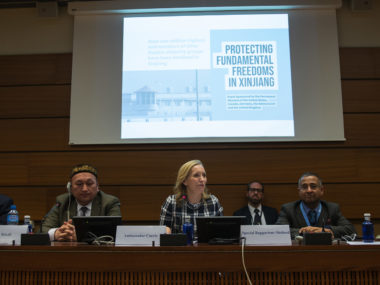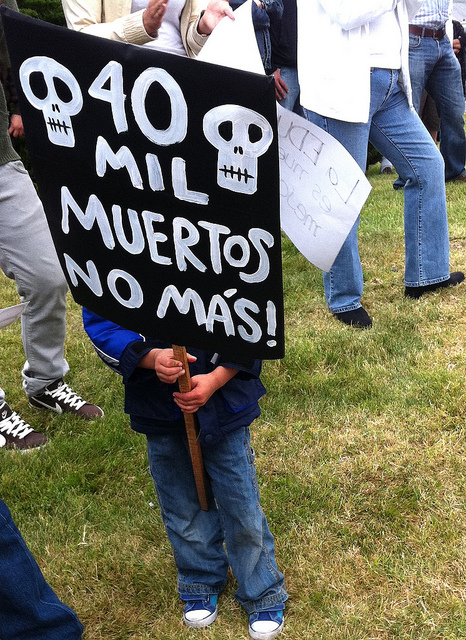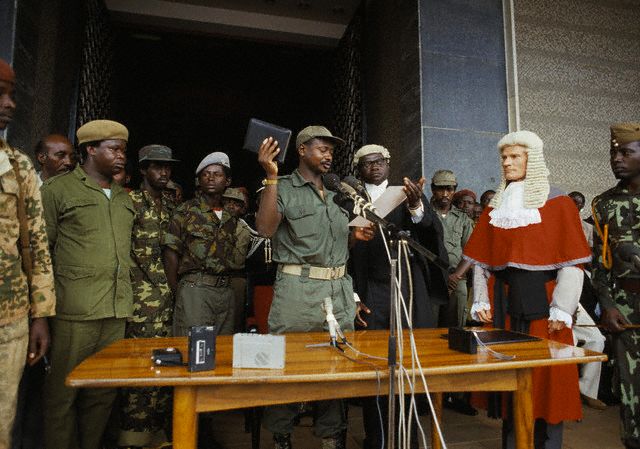By Deborah Avant for Denver Dialogues.
A recent post by Dan Slater and Lucus Way lists intervention by the “authoritarian international” as one of seven shortfalls that impeded the democratic quality of the 2016 US elections. The authoritarian international refers to the international efforts of authoritarian governments to combat democracy. Clifford Bob has written about a related trend: the “global right wing” – or transnational networks on the right – focused on combatting progressive agendas on issues like gay rights and gun control. These two analyses share a focus on transnational organization aimed at frustrating progressive efforts, first creating what Bob called “zombie policy”, and then disrupting, undermining, and de-legitimizing democratic practices and institutions. Though not formally organized and rife with potential contradictions, the global right wing appears increasingly coordinated; its leaders met in January to discuss plans for Europe in 2017.
But what happened to the left? Bob’s initial intervention was designed to challenge the academic fixation on progressive transnational mobilization. Since Keck and Sikkink’s landmark study in 1998, most academic studies of transnational mobilization indeed focused on this progressive wing. Whether the third force or constructors of global culture, the powerful networks scholars wrote about shared left leaning goals. In the wake of Brexit, Trump, Le Pen, and other stories of authoritarian resurgence, though, what happened to these dominant progressives? The activists Keck and Sikkink and others wrote about have not evaporated. Why has this strong network appeared to have lost its effect?
One answer lies in the issue focus of these progressive groups relative to global capitalism. Transnational progressive organizations have concentrated on issue politics: saving the rain forest or Darfur, fighting climate change, defending human rights, and anti-corruption campaigns, among others. There is not, however, a lot of transnational mobilization around economic redistribution. Though the World Social Forum certainly has an economic focus, many of the changes won by global civil society – from fair labor practices to extending responsibility for protecting human rights beyond governments, to environmental standards – are better characterized as reducing exploitation rather than encouraging redistribution. And center-left parties throughout the west have increasingly chosen to work with – rather than against – neoliberal forces. In Europe, Sheri Berman argues that center-left parties have focused on the “politics of recognition” rather than their traditional emphasis on the “politics of redistribution”. Similarly, Naomi Klein claims it was the Democrats’ embrace of neoliberalism that propelled Trump to power.
Another possibility, though, is the difference in organizational structure between the left and right. First, the right has built a firm local base – in the US, the Christian right began with school boards and local governments. Aided by churches and charismatic televangelists, it became a slick and sophisticated political machine as it built its influence within the Republican party. This political skill was critical in the Tea Party movement’s ability to mobilize collective frustration and “capture” the Republican party.
Second, the right has also made efforts to coordinate transnationally. As Bob argues, the transnational ties of conservative groups like the National Rifle Association have been important for scuttling domestic efforts at gun control in various countries (like Brazil in 2005). More recently, it has also facilitated connections and mimicry among far-right wing politicians and parties as they react to popular concerns over economic uncertainty and the refugee crisis. These politicians have begun to support one another – from US Republican leaders hosting Benjamin Netanyahu to the ongoing relationship between Nigel Farage and Donald Trump.
Ironically, while global left advocacy groups built grassroots support, they largely took aim at the policies of national governments and international organizations rather than the politics of local institutions. The infamous protests in Seattle in 1999, for example, targeted the World Trade Organization; they did not have a plan for taking over city halls. While Obama’s 2008 campaign in the US mobilized locally, the movement was largely mothballed after the election – subsumed under the Democratic National Committee (DNC) rather than using the DNC, or working with it, to achieve movement goals. Many progressive advocacy organizations have links to center-left national parties, but they do not have strong voices in them. Some of their activism is directed at changing the policies and practices of governments, others at building civil society in other parts of the world. Few, though, have aimed to control local or national governments through building coalitions with political parties. And, even when there have been opportunities, as Micah Sifry claims there was with the movement that elected Obama, the progressive community has neglected local institutions while also failing to connect center-left parties at the transnational level.
Of course, issue focus and organization are not mutually exclusive. In an analysis of how Norway avoided fascism in the interwar years, for example, George Lakey points to an organized left with a strong redistributive vision. In their effort to regain lost footing, we see signs that progressives in the United States are beginning to attend to both. The struggle over leadership in the Democratic party was partly about adopting the right economic message, and groups (like Indivisible and others) are explicitly aimed at building Democratic strength at the local level.
But progressives would be wise to also look to transnational connections in their mobilization efforts. Can they build on existing networks to reinvigorate progressive parties and encourage their support for one another? Constructing a transnational network of progressive organizations and parties with some coordination around a message of redistribution – but rooted in, and open to input from, the local level – may be the best hope for a recalibrated globalism (preserving the benefits of global connection but working to restrain rampant economic inequality) and a progressive resurgence.







2 comments
For starters, I think you need to distinguish between liberals, progresives, and leftists. Let’s say the Left is the side of peace, freedom, and equality, as opposed to the Right, the side of authority, power, private wealth, and hierarchical social organization. Then a leftist is someone who wants to increase freedom and equality. We can assign anarchists, socialists, and communists to the Left even if we disagree with their methods, but it is harder to put liberals and progressives in this category because of their settled affection for capitalism, war, and imperialism. They (the liberals and progressives) have a different set of problems than the leftists. The leftists’ problem is that peace, freedom, and equality are less popular among the folk than getting stuff and power. The liberals and progressives’ problem is that capitalism doesn’t work very well.
No, lets NOT say the Left is the side of peace, freedom and equality. What an absurd assertion.